A Review of the SDRplay RSP1A
Yesterday the SDRplay team released the $99 US RSP1A, which is a revision of the RSP1A. In this post we present a review comparing its performance against the older RSP1 and the currently selling $169.95 US RSP2. We aim to mainly show demonstrations of improvements that we've found on the RSP1A in areas where we discovered problems on the RSP1 or RSP2.
Discussion of Improvements
First we present a discussion on the improvements made.
TCXO: The first noticeable improvement is that the RSP1A now comes with a 0.5PPM TCXO. This was one of the main criticisms of the RSP1 as the RSP1 only came with a standard oscillator which can drift as the temperature changes. But as mentioned in our previous review that included the RSP1, the drift was fairly small after warmup due to the good heat dissipation of the large PCB, and the relatively low power usage and thus less heating of the Mirics chips used on RSP units. Nevertheless, a TCXO is a good upgrade and brings it back in line with most low cost SDRs on the market now.
Enhanced RF Preselectors + Notches: Strong out of band signals can overload an SDR causing problems like imaging and reduced sensitivity. Preselectors are RF filters which help to filter out unwanted signals for the band that you are listening to.
The RSP1 had 8 preselector bands and the RSP1A brings this number up to 12, which is even more than the 10 preselectors on the RSP2.
In testing we found that the new preselectors certainly do help out a lot. The new 2 MHz low pass and 2 - 12 MHz certainly help to reduce interference from the MW broadcast AM band. Changes in the VHF filters reduce problems from strong broadcast FM and DAB stations. The filters have also been sharpened considerably making the existing filters even more effective. The RSP-1 in some cases suffered quite severely from out of band signal interference, and the RSP-2 made it a bit better, but the RSP-1A solves the interference problem much more.
The new FM/AM and DAB notch filters also do a good job at notching out these often problematic very strong signals.
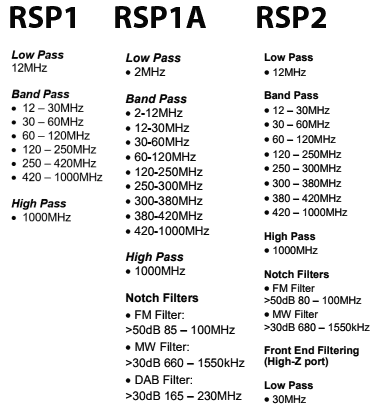
Improved LNA Architecture: In the RSP1 the front end LNA could only be turned on or off. Turning it on reduces the noise figure and improves performance, especially at UHF frequencies. The single gain step was problematic as often the LNA could overload on strong signals if turned on. The RSP1A introduces a gain control block which allows the LNA to have variable gain steps.
This new architecture helps to maximise the dynamic range of the RSP1A, thus reducing overloading.
Extended frequency coverage down to 1kHz: The lower limit of the RSP1 was 10 kHz, so really low LF reception is now available on the RSP1A.
Bias-T: Just like with the RSP2, the bias-t allows you to power external devices over the coax cable. Such as remote LNAs, switches etc. Running a good LNA next to the antenna is optimal, as this helps push signals through the coax cable losses.
RF Shielding: Like the RSP2 the plastic case is now spray painted with metallic paint on the inside. This works almost as well as a full metal case to shield from unwanted signals entering directly through the PCB, instead of through the antenna. We do still notice some leakage making its way in through the coax shield, but it is relatively minor with the shielding.
ADC Resolution Increased to 14-bits: The RSP1A uses the same ADC chip as the RSP1, but now has unlocked 14-bit ADC capability for bandwidths below 6 MHz thanks to onboard decimation and oversampling. So now 14-bit data comes directly into the PC if using a bandwidth below 6 MHz. Further decimation can still be achieved within software like SDRuno.
A higher bit ADC can improve dynamic range, meaning that strong signals are less likely to overload the SDR.
We asked SDRplay how 14-bits was achieved with the same chips used by the RSP1 and they explained that it is through oversampling and decimation onboard the chip. They also wrote the following technical reply which is a very good read (collapsed as the reply is quite long, click on "Read the Reply" to expand):
READ THE REPLY The ADCs on the MSi2500 use a sigma-delta topology where a highly oversampled multi-bit ADC uses decimation filtering to provide the desired resolution. As the original spec for the MSi2500 called for 12 bit resolution, the fact that the converter was capable of delivering 14 bits for final sample rates of less than 6.048 MHz was ignored. Working with the Mirics team, we have been able to unlock the extra two bits of resolution that the MSi2500 was always capable of delivering. Using sample rates above 6.048 MHz, the ADC defaults back to 12 bit resolution. They also explained: If we take an 8 bit ADC for example, we can expect around 48 dB of instantaneous dynamic range. This will most likely be far lower than that achievable from the RF front end whose dynamic range will be influenced by factors such as noise figure, intermodualtion, cross modulation and synthesizer phase noise (reciprocal mixing). A decent tuner front end should be capable of delivering 65-70 dB of instantaneous dynamic range, which is also roughly what you can expect from a 12 bit ADC. In other words, we believe that in the RSP1, the instantaneous dynamic range of the tuner and ADCs were approximately the same. The limitation that the RSP1 had was because of the single gain step in the LNA, it was not always possible to utilise the available dynamic range in the most effective way. The RSP1A gives much greater (and finer) control over the RF gain and this allows for better alignment of the signal level into the tuner to better exploit the available dynamic range. In our tests in the broadcast FM band, we believe that the RSP1A gives around 10 dB more ‘usable’ dynamic range than the RSP1. In other words, if we combine multiple controlled modulated signals (for RF signal generators), with real weak off-air signals, the RSP1A is capable of handling interferers that are around 10 dB greater than the RSP1. Benchmarking against other products, in our tests, the RSP1A seems to give better performance now than anything else in the same price range, both in terms of sensitivity and in terms of in-band overload performance. Without wishing to labour the point about myths and misunderstandings, it is worth adding a bit of clarification regarding the term ‘dynamic range’. This is a much misunderstood term which can mean very different things depending upon the circumstances and type of signal being received. There is also a difference between ‘dynamic range’ and ‘instantaneous dynamic range’. If you ask 10 different radio engineers what they mean by the term dynamic range, you are sure to get more than one different answer! Another important point to note is that ADC dynamic range is NOT the same as receiver dynamic range. When referring to ADCs, the term dynamic range generally refers to the Spurious Free Dynamic Range (SFDR). This is measured using a CW tone and refers to the ratio between the maximum RMS signal that the ADC can handle and the largest spur or level or quantisation noise within the ADC bandwidth. This is a measure of both noise and linearity of an ADC. As a case in point, it is worth noting that a 16 bit ADC may not necessarily have a higher SFDR than a 12 bit ADC despite having a greater resolution. The greater resolution will generally result in a lower level of quantisation noise, but not necessarily a lower level of harmonic distortion and spurs. In a multi-channel/multi-signal SDR system a lower level of quantisation noise is generally helpful, even if the SFDR is not better, but is not guaranteed to give better performance if the weak signal of interest happens to fall on top of an ADC spur. Where a single signal occupies the entire ADC bandwidth, it is ONLY the SFDR that matters and not the resolution or quantisation noise. Sometimes you will hear people refer to the Effective Number Of Bits ENOB. ENOB is related to the SFDR in that it is a measure of the maximum SINAD that can be attained with an ADC at a give sample rate and so is also a measure of both linearity and noise performance. ENOB is actually = (SINAD – 1.76)/6.02 Compared to the RSP1 the RSP1A PCB is significantly more populated due to the additional filter banks. Below we show some screenshots of tests that we made to compare the three RSP units. We focused on bands where the RSP1 or RSP2 had issues, and try to show how much improvement you can get from the RSP1A. In the screenshots below we compare the three SDRs on the broadcast AM band which has some very strong signals. The RSP1 definitely shows signals of overloading and turning the gain down did not reduce the interference shown between 0 - 500 kHz. The RSP1A on the other hand does not overload that easily. In the third screenshot we turn the MW notch on half way through the waterfall. The notch does not cover the entire AM band and signals at around 500 - 700 kHz are attenuated less. But turning it on does seem to do enough to solve most imaging problems as will be seen in the next tests.
Next we tested the LF band. Again a you can see the RSP1 suffered pretty badly from broadcast AM overloading. Reducing the gain did not help to reduce the interference significantly. The RSP1A fares significantly better once the MW notch filter is turned on. The interference reduces leaving a much cleaner spectrum. Some carrier remnants of the AM signals can still be seen, but it is not nearly as bad as before. In the screenshot we turn the MW filter on half way through the screenshot so you can compare the difference with it on and off. The RSP2 suffers from the same overloading problem as the RSP1. The issue is that the HiZ port which is recommended for use on the HF bands does not have a MW notch filter. Oddly on the RSP2 the ports recommended for VHF/UHF do have the MW notch, but we did not try these ports due to their lower sensitivity on HF. Again similar imaging problems occured on the RSP1 and RSP2 a little higher up the band at 300 - 500 kHz. The RSP1A showed a much cleaner spectrum once the MW filter was turned on. Again the MW filter is turned on half way through the RSP1A screenshot to give a comparison of it being on and off. Here we see that the RSP1 was desensitized by the strong AM signals. The 2-12 MHz filtering in the RSP1A reduced the AM signals enough and improved the sensitivity significantly. A problem on the RSP1 was that interference from FM and DAB station images would always show up at around 380 MHz. The RSP1A reduces this problem significantly. Even with the FM notch turned off the FM interference was reduced, and the DAB notch was not needed to get rid of the DAB image. Turning on the FM notch further reduced the FM signals. But some FM interference still does get through, and we believe that it leaks in through the coax shield. However, when testing we used a preproduction unit that did not have the additional metal spray paint shielding. We have found that shielding the unit significantly reduces this coax shield coupled interference, so it should not be an issue on production units and should be nearly equivalent to the RSP2 screenshot. Here the RSP1 suffered from interference from a DAB station image right in the 416 MHz trunked business band. The RSP1A did not suffer from the same problem as badly even with the DAB filter turned off, although a faint outline of the DAB signal can still be seen. In the 918 MHz mobile phone uplink band the RSP1 also had some issues with DAB image interference. This interference is non-existent on the RSP1A and RSP2. Of course many people will be asking how does the RSP1A compare to the other recently announced SDR, the Airspy HF+. Or how does it compare to the other Airspy units. Firstly, the Airspy HF+ probably shouldn't be compared to the RSP1A as they are just too different. The Airspy HF+ focuses on the HF and VHF bands, with a smaller bandwidth of 660 kHz and has a gap between 31 - 60 MHz. It does however have the best performance in terms of sensitivity and strong signal handling in those bands out of any sub $300 SDR that we've seen to date. So the Airspy HF+ remains the best low cost DXing SDR. The RSP1A on the other hand is a wide band 1 kHz - 2 GHz SDR with up to 10 MHz of bandwidth. It is more multipurpose, but at the expense of reduced performance in challenging signal environments. The RSP1A is more fairly compared to the Airspy R2 or Airspy Mini. We have not yet done a full comparison between the two and believe that most people will be happy with either unit. But we do feel that the Airspy R2/One is the better unit with a cleaner spectrum to use in a higher end RF setup and with external components such as LNAs and filters. The RSP1A on the other hand may be more desirable for some due the lower cost and wider tuning range. The RSP1A is better if you don't have the budget for a higher end setup and represents great value for money. It also depends on if you prefer the SDR# (Airspy) or SDRUno (SDRplay) software packages, both of which can be tried with RTL-SDR dongles first if you are unsure. Airspy drivers are also open source, whereas SDRplay drivers are not, and Linux operation with the Airspy seems to be better. So this may factor into your decision as well. Like the RSP2 the RSP1A does not offer any core technology changes from the initial release of the RSP1 back in 2014. The exact same tuner and ADC chips are used. However that said, the RSP1A is a highly tweaked version of the RSP1. The SDRplay team have learned from the issues present in the RSP1 and have fixed almost every one of them by improving the filtering and front end architecture. With these changes problems in the RSP1 like overloading and imaging are eliminated or at the very least significantly reduced. The new features like the bias tee, TCXO, RF shielding and oversampling up to 14-bits are also a nice bonus. Amazingly despite the upgrades the price of the RSP1A also remains the same as the RSP1 which is $99 USD. But if you have a RSP1 should you consider upgrading to the RSP1A? The answer depends entirely on what you're doing with the unit and what your signal environment is like. If you find yourself struggling with images and overloading on the RSP1, then yes the RSP1A might fix those issues. If you're already getting excellent results on the RSP1 then there is no need to upgrade. Also some potential SDRplay buyers may now be confused when trying to choose between the RSP1A and the RSP2. Compared to the RSP2 the RSP1A has a slightly better tweaked architecture, but the RSP2 offers additional features like 3 input ports, and external clock input and outputs. For most people the RSP1A will be all that is needed, and will find its performance the same as or even better than that of the RSP2. But if you have multiple antennas that you like to switch between, or have some application for the in/out clock ports, then go for the RSP2.
The RSP1 always gave very good sensitivity but in optimising it in this way, we gave up some performance in terms of in-band overload performance. Our objective with the RSP1A was to address this without sacrificing sensitivity.
Now, going back to the issue of 14 bits vs 12 bits and instantaneous dynamic range. If we increase the ADC dynamic range from 12 to 14 bits, then the ADC dynamic range should no longer influence the performance of the receiver. Indeed, it is our view, that for any receiver that needs to use a tuner as part of the front end (and any receiver that operates across the frequency range of the RSP will have to use a tuner for the foreseeable future), there is little benefit to be gained with ADC resolutions in excess of 14 bits, as to utilise the extra dynamic range that a higher resolution ADC can give, a much higher performance tuner would be required. Tuner technology has come a very long way in the last 10-15 years and the performance of modern integrated devices is actually very good. To get 12 dB of better dynamic range from a tuner is extremely difficult and can really only be achieved by using very much greater levels of power and esoteric semiconductor technologies. One possible area where you might see better performance is where you have multiple strong interfering signals to the extent that the RF gain needs to be turned down to such a level that the ADC quantisation noise effectively limits the noise floor of the receiver. In this case, you ought to see improved performance in 14 bit mode when compared to 12 bit mode, but please note that the improvement may only be a few dBs in the weak signal reception. If the noise floor of the receiver is still limited by the external LNA, then improved ADC dynamic range will give no perceptible improvement whatsoever.
A direct sampling receiver that does not use a tuner should in principle allow greater dynamic range than one that does, but in practice any direct sampling ADC needs some form of external low noise amplification to ensure a reasonable noise figure and the dynamic range (noise, intermodulation performance etc) of this external amplification block becomes a limiting factor. This is certainly true at VHF and above. At HF, as you will be well aware, the receiver noise figure is not really very important because the atmospheric noise floor is so high. In principle, you might therefore think that our best approach would be to bypass the tuner and use the decimated 16 bit performance of our ADCs. This would still give an effective receiver bandwidth of 375 kHz with 16 bit performance. The reality though is that the real dynamic range of signals coming into the antenna is limited by propagation conditions and atmospheric noise. It is rare to find signals that are above the atmospheric noise floor that vary by more than 60 dB. In practical terms, we believe that equivalent performance can be achieved, simply by the addition of RF pre-selection and AM-band notch filters and in this way we avoid some of the other compromises of direct sampling systems.
So, in a nutshell, when transitioning from 12bit mode to 14 bit mode, don’t expect to see 12 dB more dynamic range. In the real world, it doesn’t work this way. This is why 12 bit devices can give quite favourable performance to higher end 16 bit SDRs such as the Elad FDM-S2, particularly when you consider the difference in cost. We fully expect the Elad to be better, but the difference will not be 24 dB or anything close to it.
In the ADC subsystem used in the RSP, whilst the ADCs are 12 bit at 8 MHz sampling the ENOB is 10.4 (for both I and Q). At lower sample rates, the ENOB improves and gets closer to the idealised performance of the converter.
In a receiver system as a whole, the term dynamic range will generally be interpreted to mean the difference (in dB) between the minimum discernible signal and the maximum level of signal that can be handled. But this is different from the term instantaneous dynamic range, which generally refers to the difference between the minimum discernible signal in the presence of the largest signal that can be handled at the same time. What this ‘number’ is in each case will depend upon the type of signal. So for example, a receiver with a given noise figure and linearity performance will have a different instantaneous dynamic range when receiving a 8 MHz wide 256-QAM CATV signal than when receiving a FM signal that is a few kHz wide. This is simply because the SINR (Signal to Interference + Noise Ratio) requirement for a given BER for a 256-QAM signal is very different than that required for a FM signal and also the peak to average ratio of the two signals is very different.PCB Photos
Testing the RSP1A
Medium Wave Broadcast AM Band
225 kHz
NDB Interference
6 MHz
BCFM DAB Interference at 380 MHz
416 MHz DAB Interference
918 MHz DAB Interference
Comparisons with similar SDRs?
Conclusions
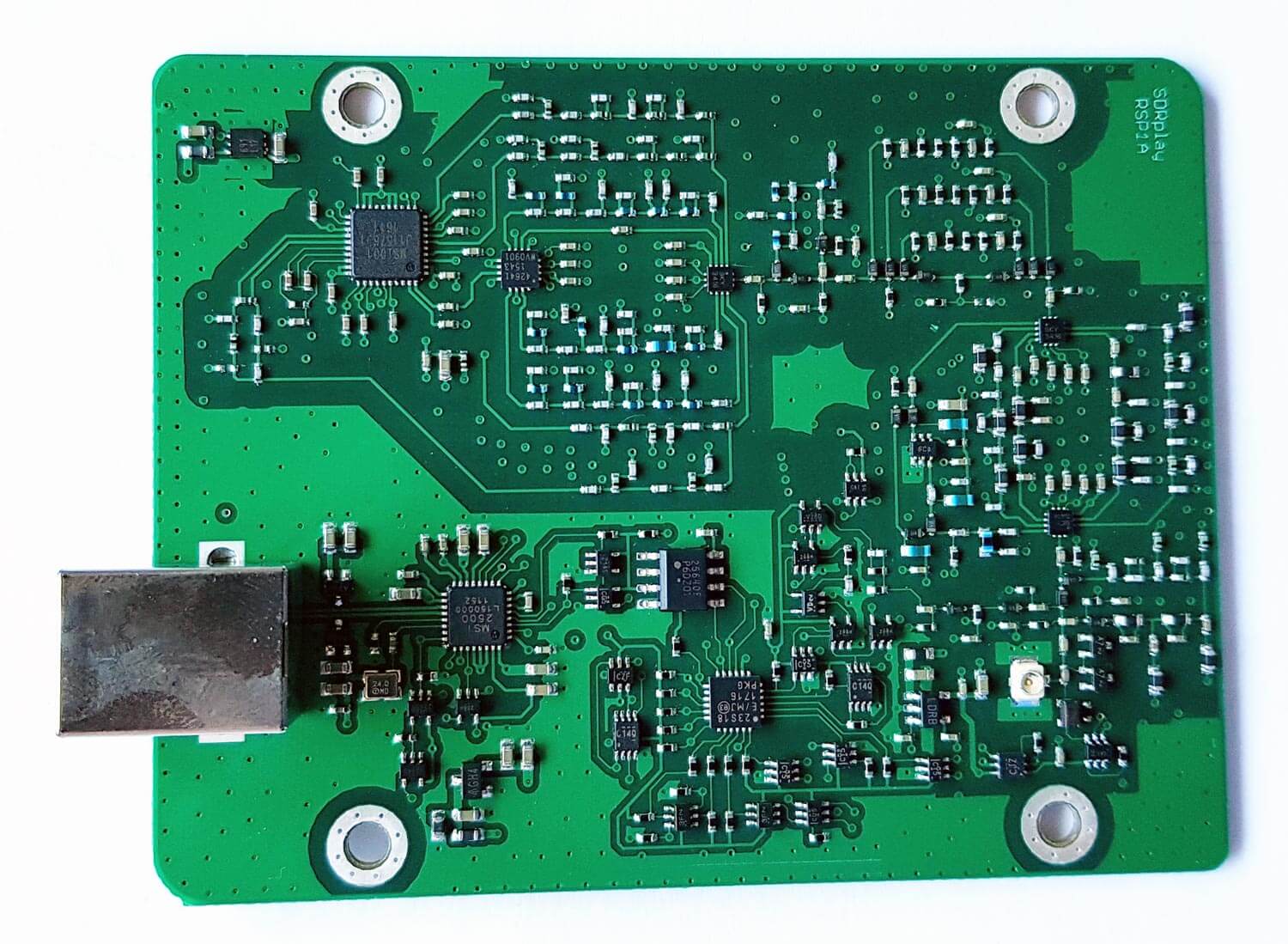
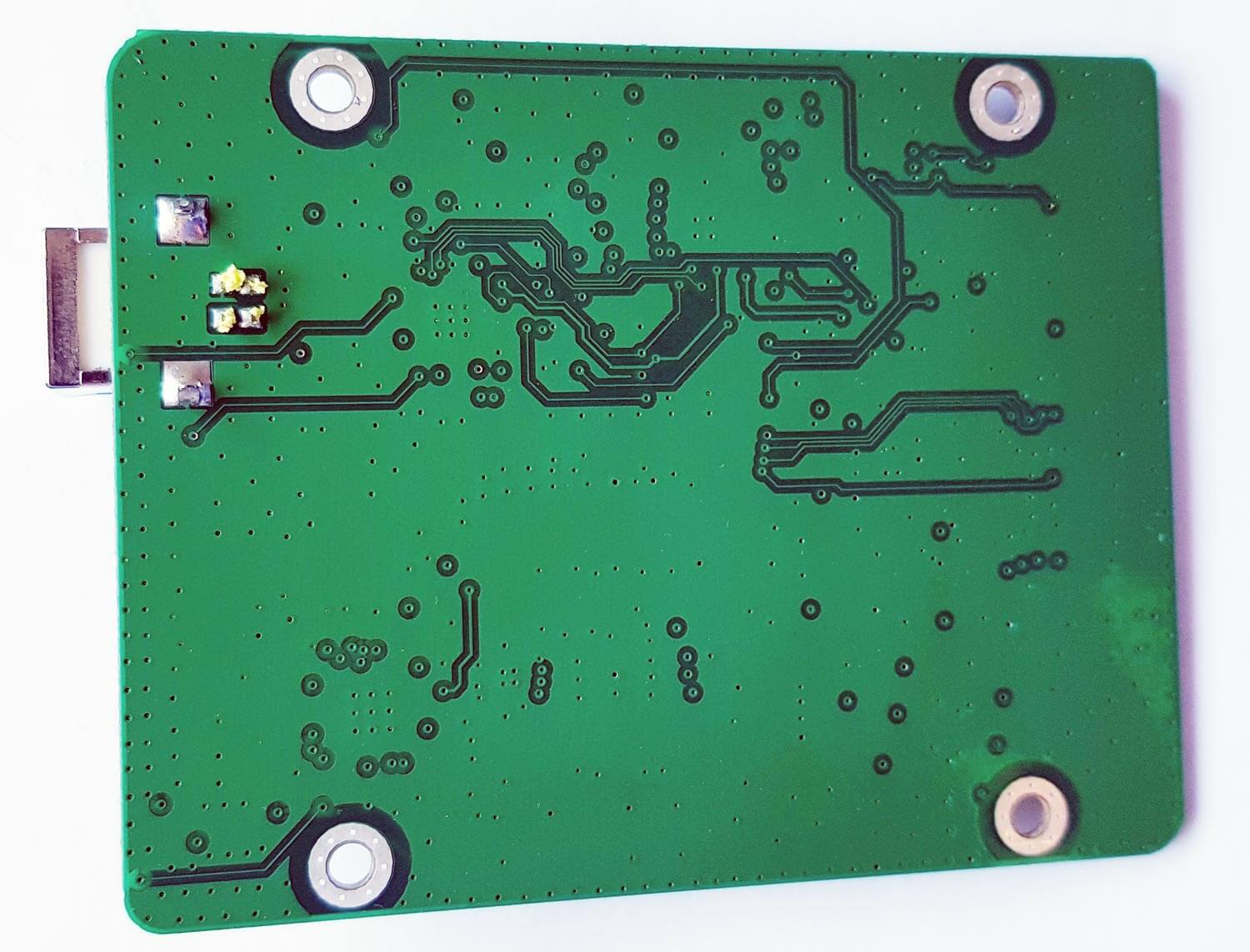

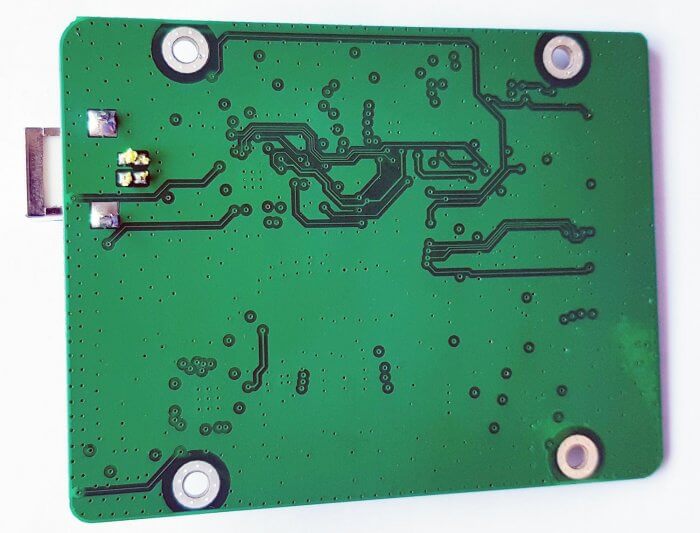


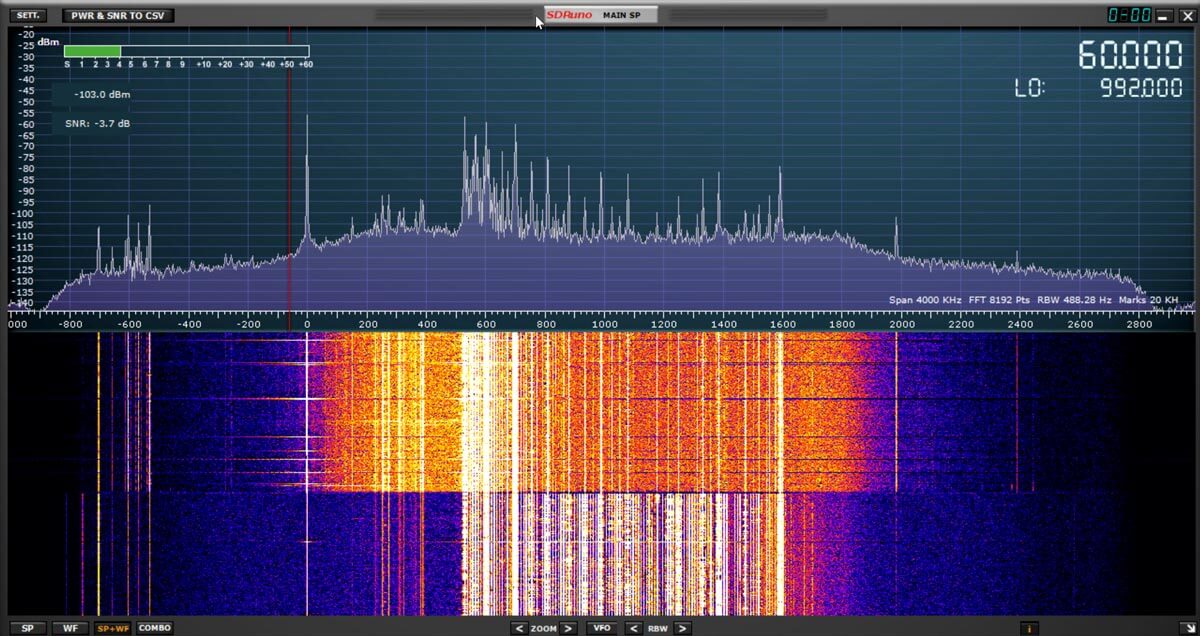

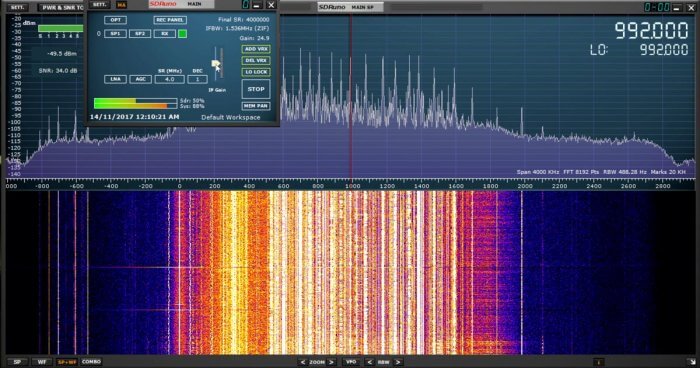

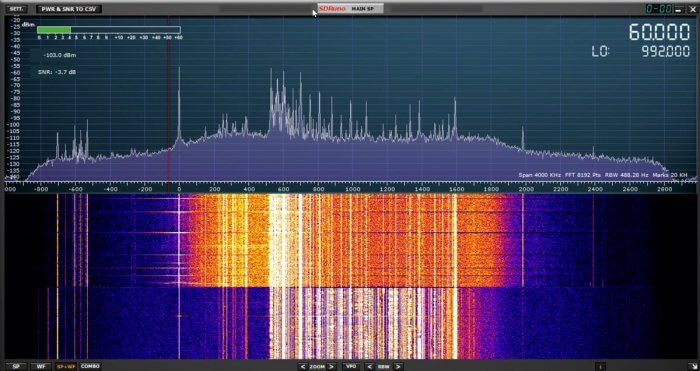
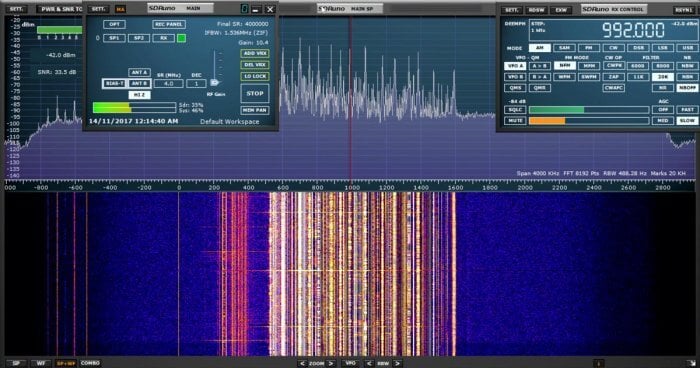


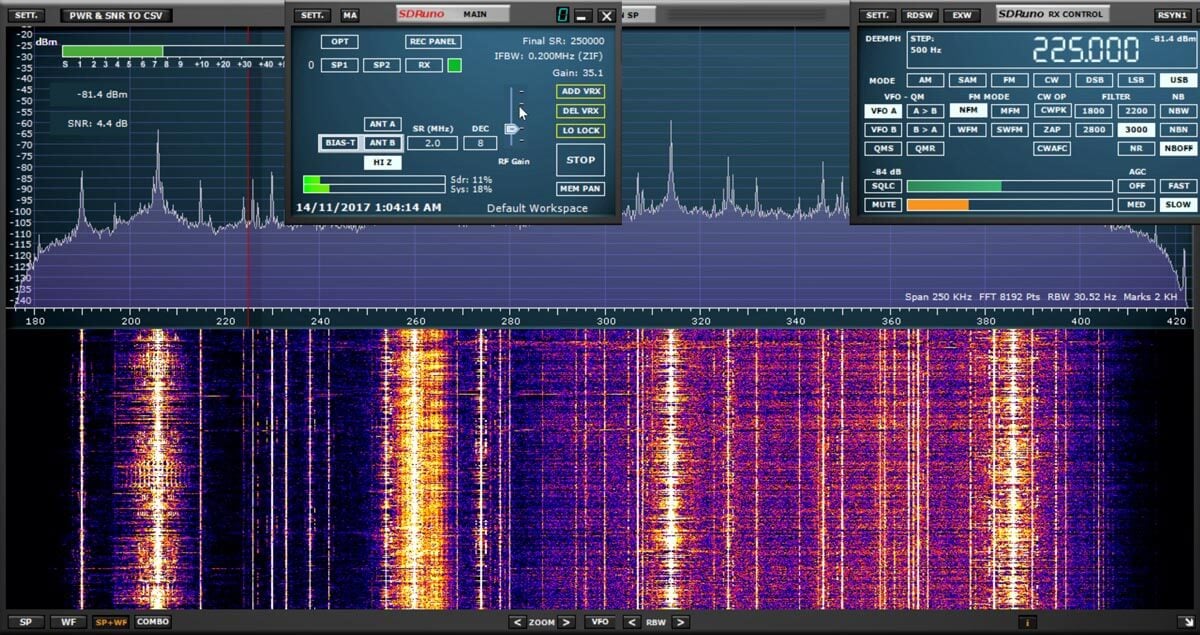


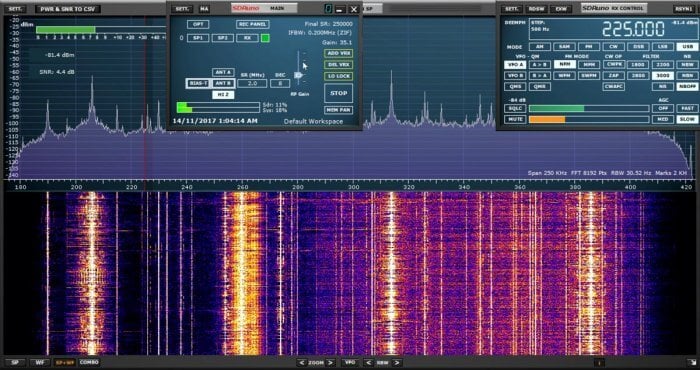

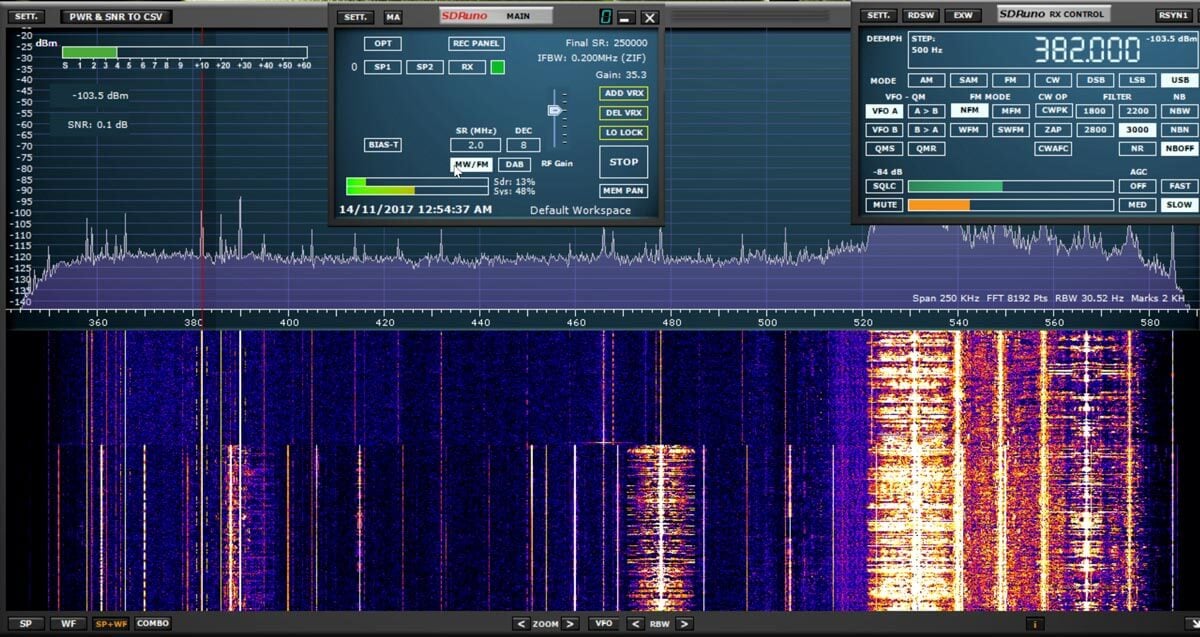
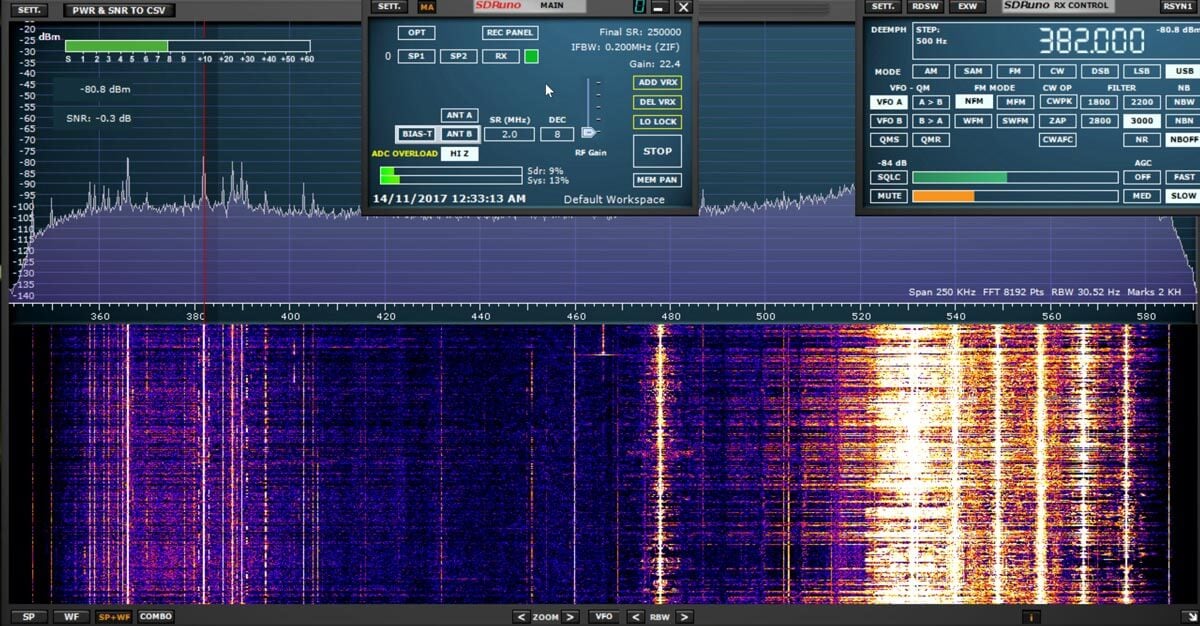

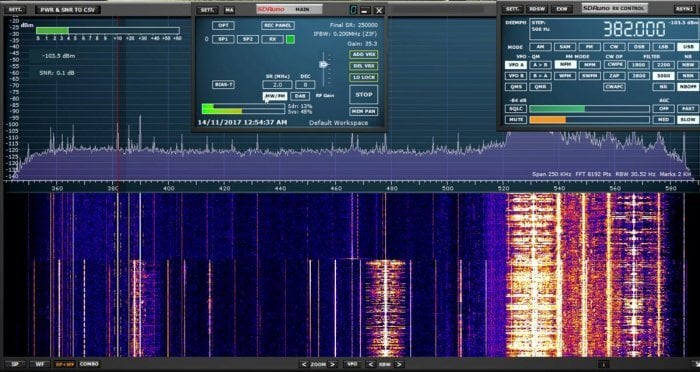

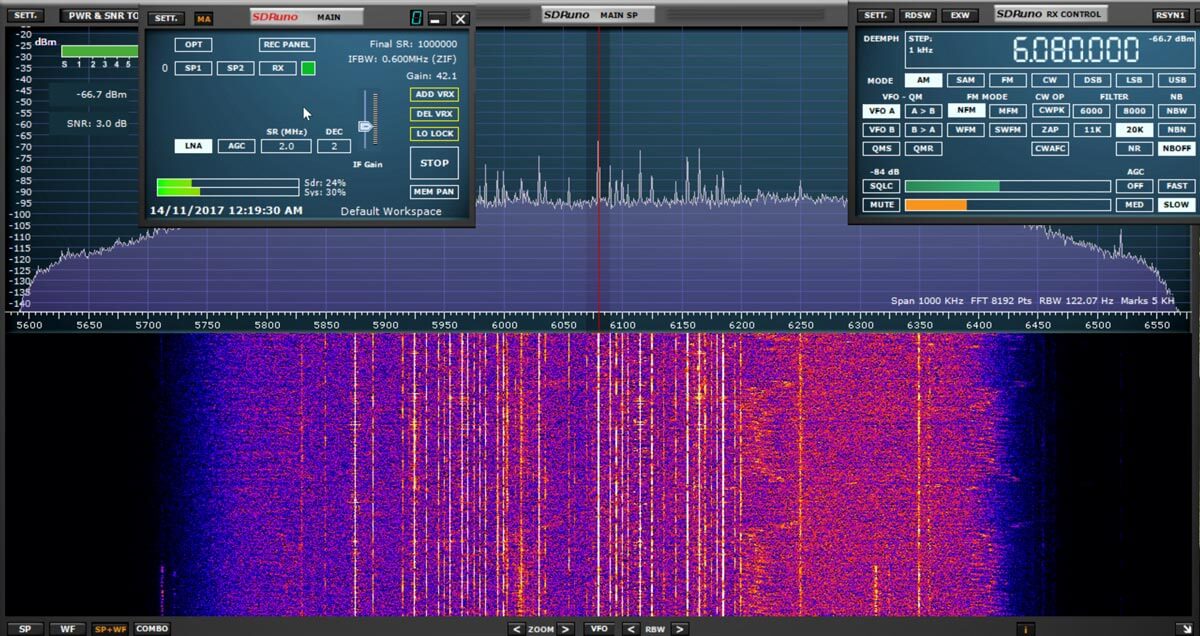
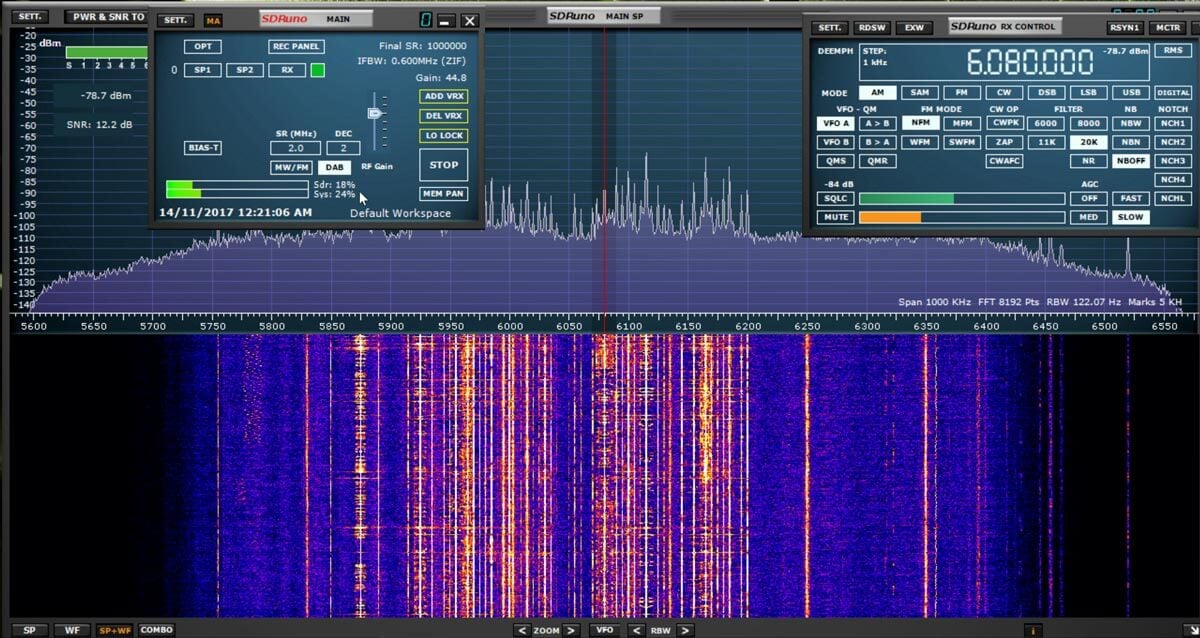
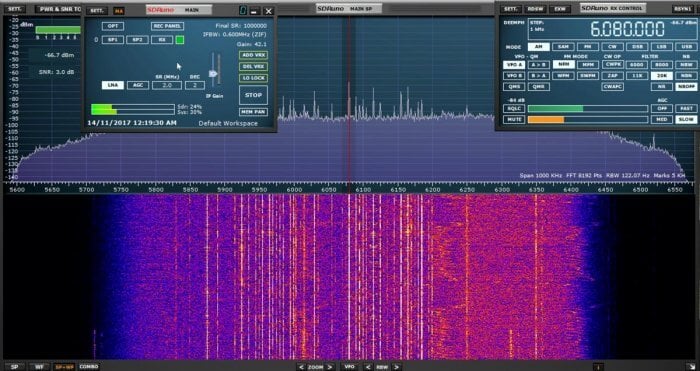
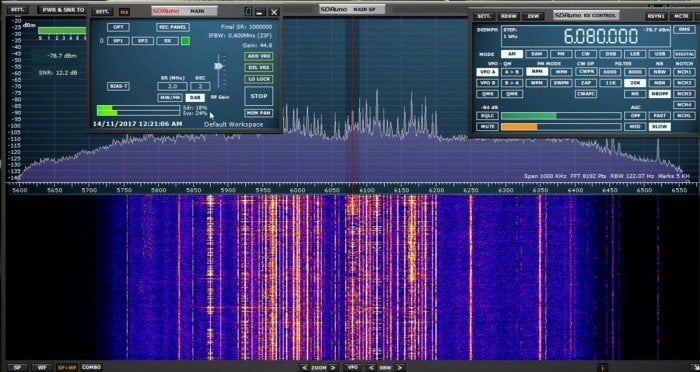
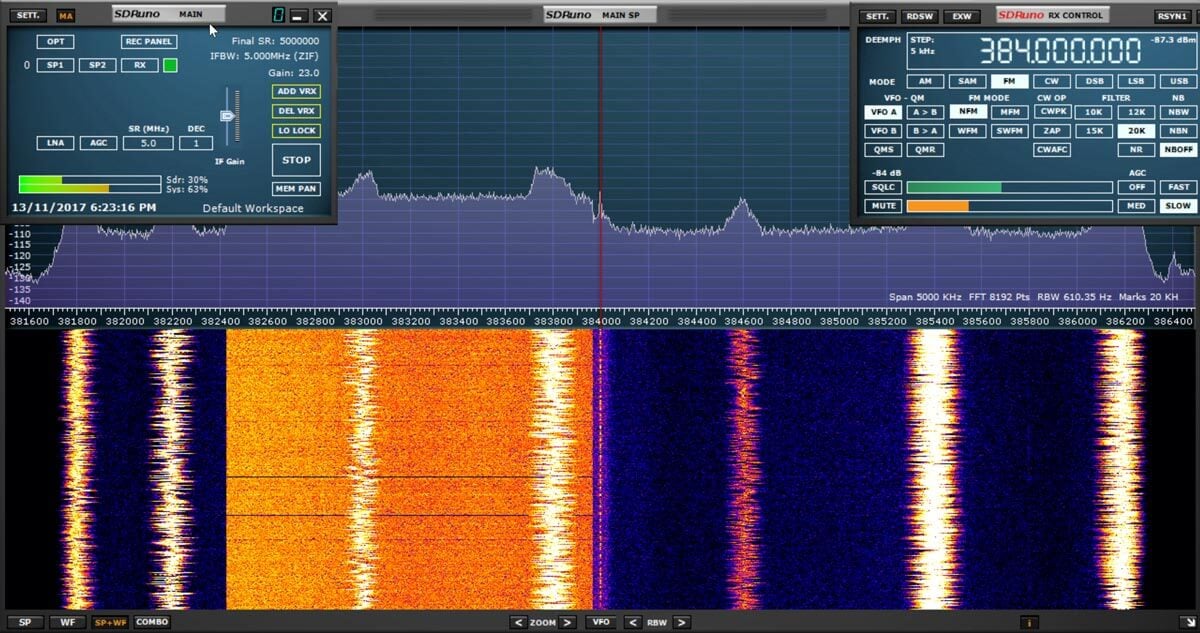
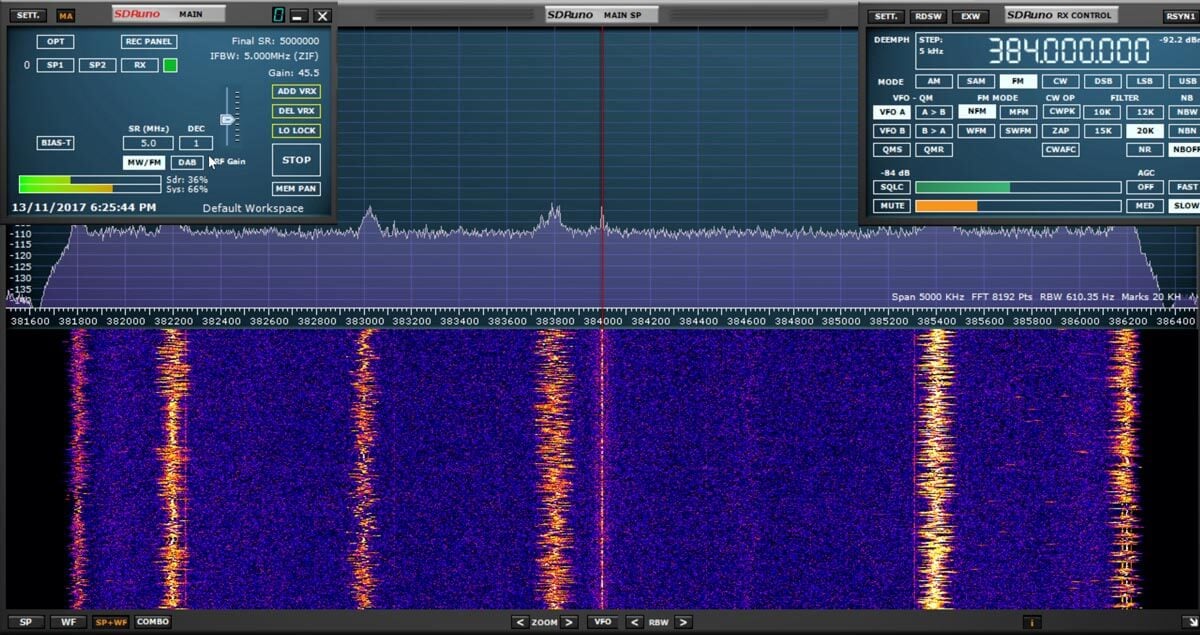
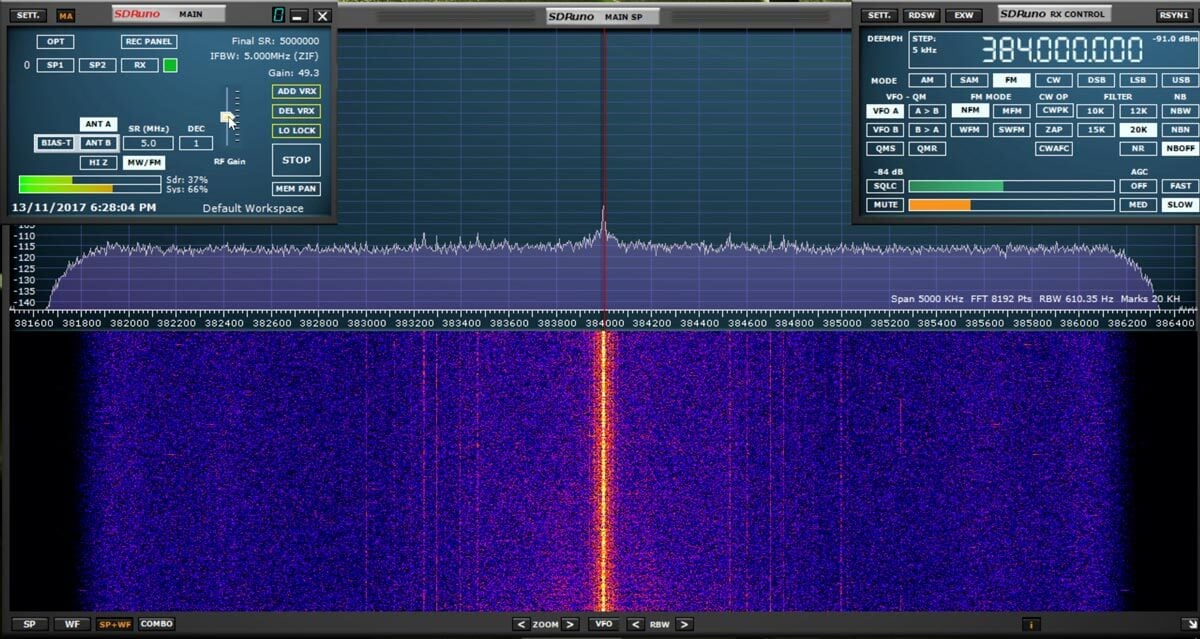

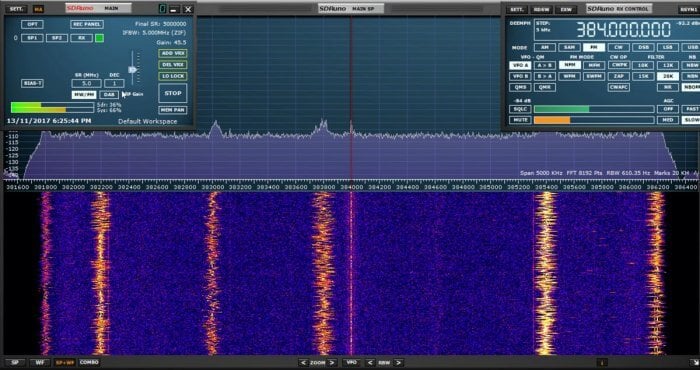
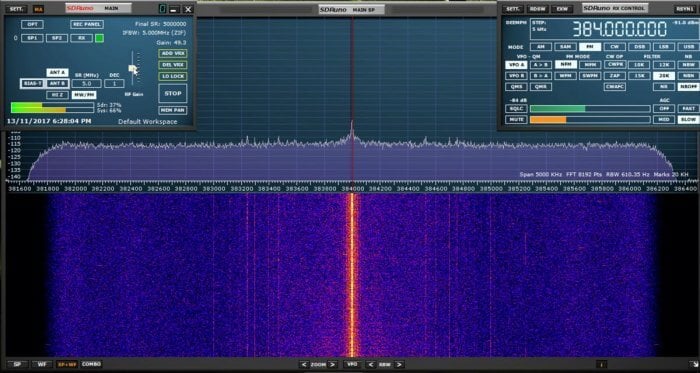
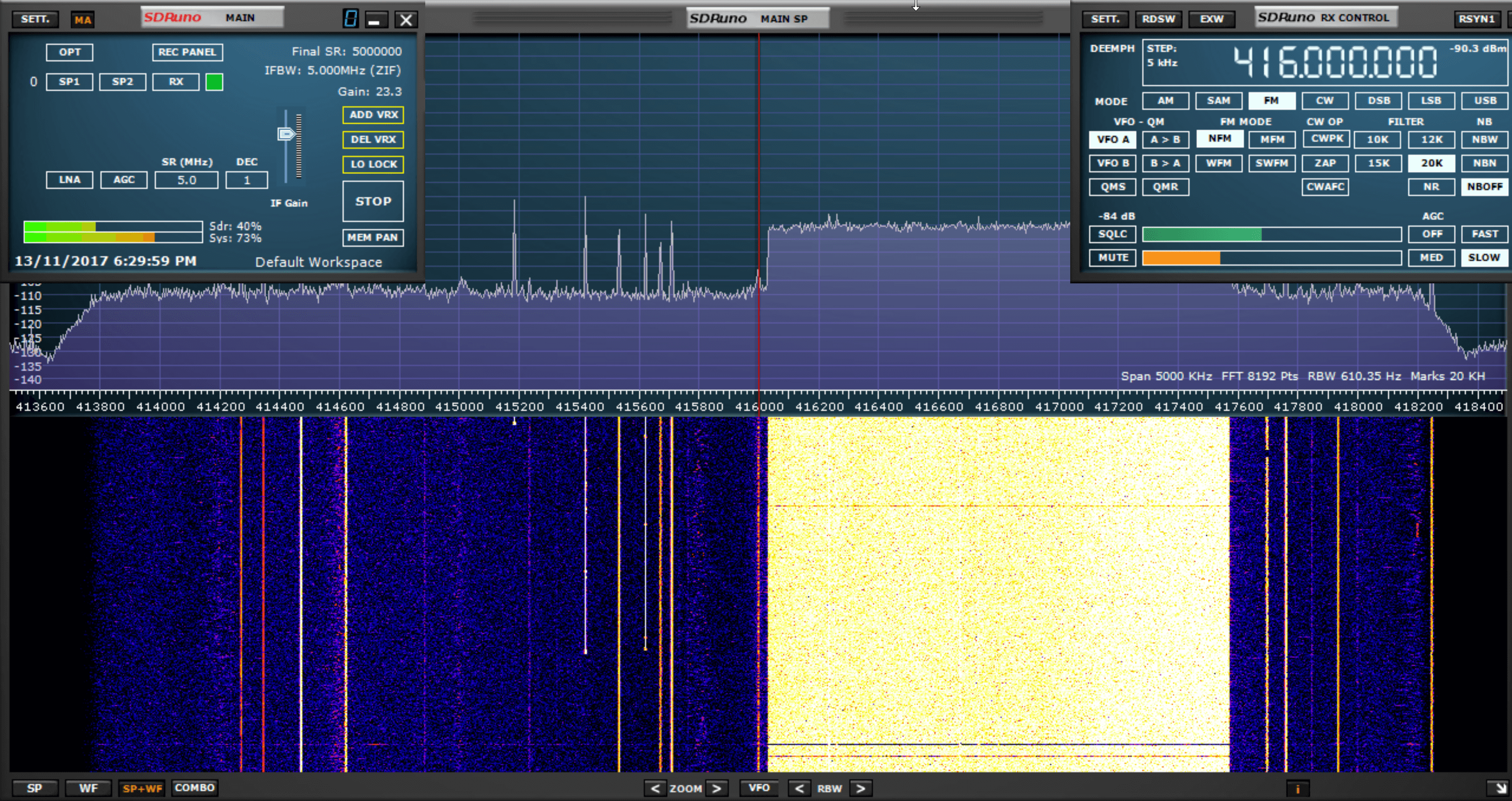


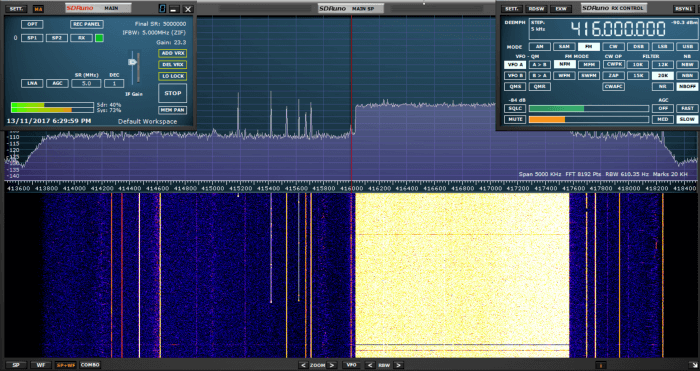


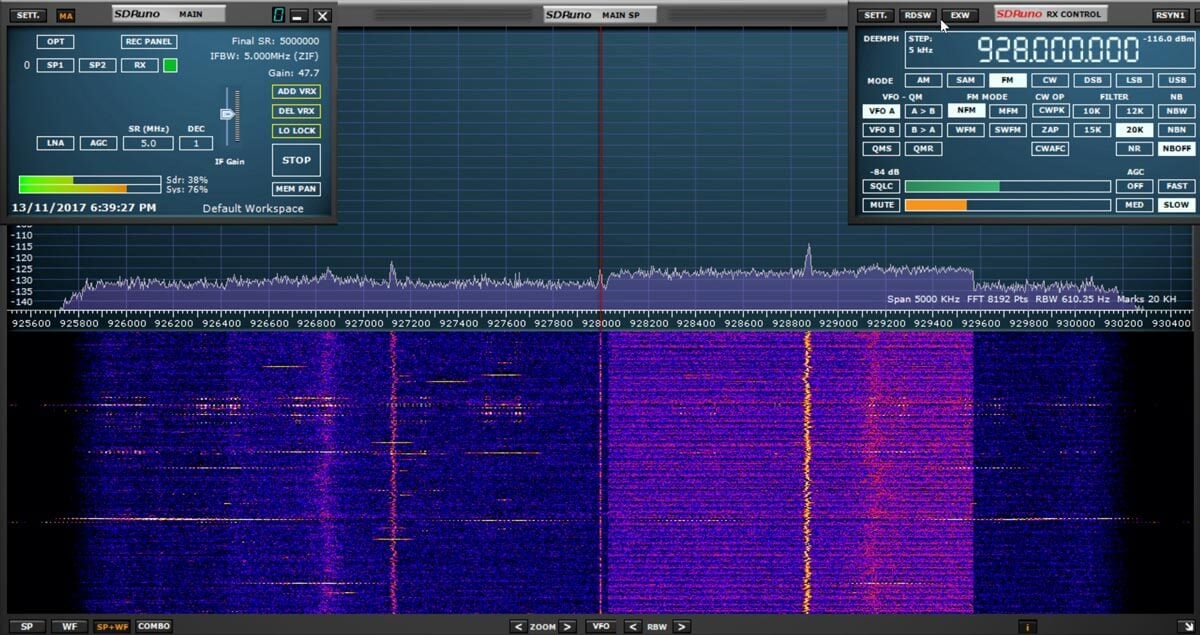
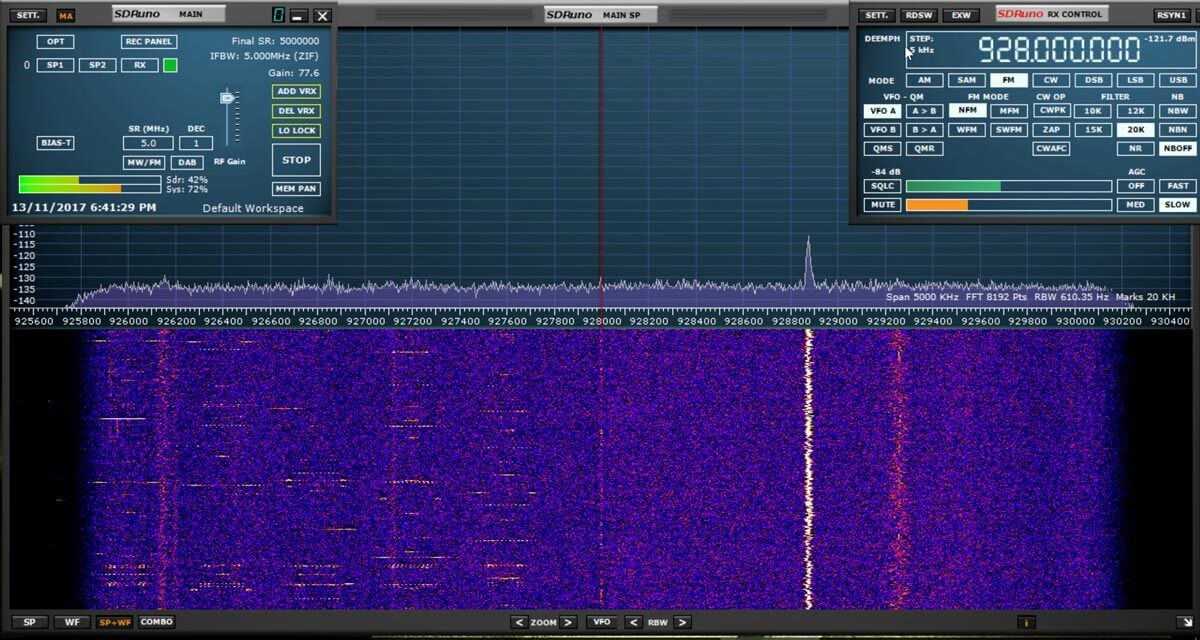

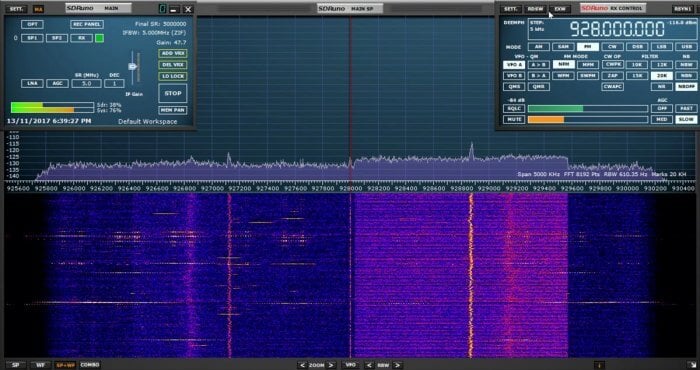
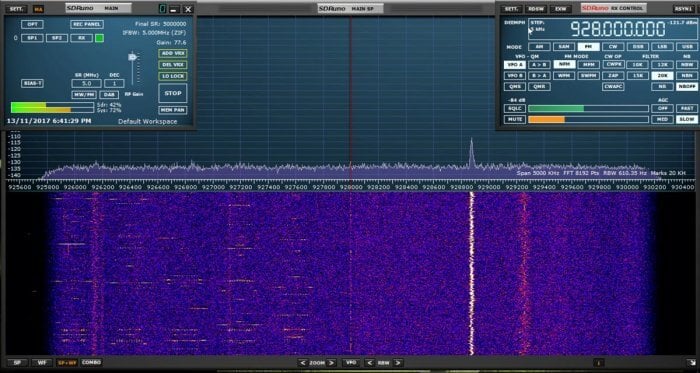
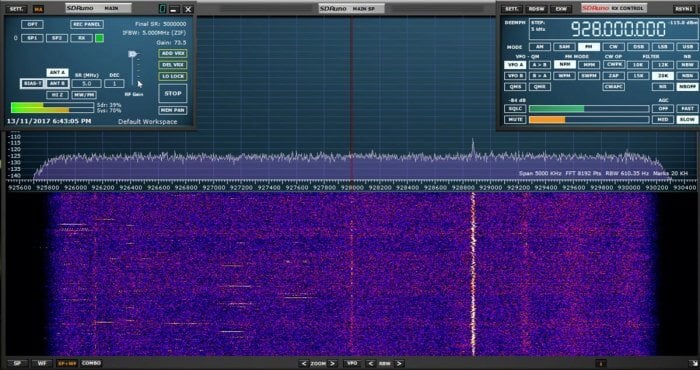
I feel the dabfilter is too wide in the rsp1a, it cuts into 166Mhz which is heavily used for NFM in the UK and even hits Marine band.
I would like to use a RSP on the IF output of my K3S. would the RSP1A or RSP2 be a better choice?
My use would be for a panadapter and I’m not sure if this would help to setup CW Skimmer as well. no experience in either area so thanks in advance for any help.
Joe
The RSP1A will be fine for a panadapter setup. There are lots of helpful youtube videos out there depending on which SDR software you choose. Here’s an example showing CW Skimmer on an RSP using popular HDSDR https://youtu.be/tw205yjZsug – For specific help regarding CW skimmer and your particular set-up, you can raise a ticket on https://www.sdrplay.com/support/ and we will help you. Links to other SDRplay-specific forums and Facebook groups can be found here: https://www.sdrplay.com/supportmenu/ (The RSP2 and RSP2pro versions are ideal if you also want to use the RSP as a standalone receiver with selectable antenna ports or make use of the external clocking facility)
Thanks Jon! I will follow up on the resources you provided.
Hopefully by the time I get to Dayton (Xenia) I will have some focused questions to ask as I understand the company will be at the HRO booth?
I will likely go with the RSP1A unless I am tempted by a RSP3 at Dayton. 73, Joe
This is confusing. Is this where I ask the question about this unit. So far I’ve tried over ten sites for now and NOONE has answered my question: Does this unit connect into the rcvr port of my transceiver, and if so, will it tune along with the transceiver as I work different frequencies??? I would like a phone number I can call, otherwise I won’t be waisting my money on setting up this unit. Thanks Greg
I haven’t tried it myself, but I know it can be done as many have done it. Try asking at the SDRPlay Facebook site. Or at the SDRPlay site forum.
Greg,
You haven’t been at all forthcoming with any specific information regarding your setup, yet you nonetheless demand specific answers.
1) What transceiver are you using? Exactly what capabilities did the manufacturer provide for external control of the radio? (Are you even able to answer that question?)
2) What exactly do you mean by “rcvr port”? Are you referring to an IF tap on your transceiver?
3) What software are you using? The RSP1A doesn’t do anything by itself, it needs to work in conjunction with software running on an external computer in order to accomplish anything. (Do you even know what software exists, that does what you need?)
4) I’m not aware of a phone number you can call and spend who knows how much time talking to someone on the other end, for free, who will wait patiently while you start from scratch trying to learn everything you need to know to get your new RSP1A setup and running (assuming you’ve even bought one yet).
5) My advice would be to start reading the wealth of information available at the myriad of websites that exist out on the World Wide Web.
I’m sorry if I came across sounding harsh, but you really need to take the incentive to help yourself first, or at least be prepared to provide us with some specifics, before you start demanding that someone else help you.
To Whom Concerned: I appreciate your reply. I have a Yaesu Ft-2000 w/DMU-2000. I wasn’t going to use it with this unit. Instead, I have an ICOM 751A whose rcvr output connects directly to the 1st IF. I was hoping that the RSP1A would work in the radio. I’m familiar with it being connected to a PC computer, and even went to the trouble of buying a lap-top with Windows 10, and connecting the unit to the computer. After install I couldn’t figure how to even tune the unit. Many of the sites were not helpful, and HRO here is so busy they don’t even seem to have the time to help. They do have a T/R switch between the unit and the antenna of the xcvd which when RF is detected will switch the input off. I however was unable to determine from them if the unit would work before the 1st IF of the ICOM. It’s 1st IF freq is 70.4515Mhz. As a result of the confusion I returned the unit and the PC until I could figure out what would work. In the 2000, there is frequent use of Panadapters, but I was hoping that this would be a better rcvr for either radio. I’d really like to incorporate this into either radio if possible. Thanks. The Yaesu’s 1st IF freq is 69.450Mhz. I hope this helps, and I’m sorry too that I was a little short with you too! Greg K0CPH
I forgot to mention, that I did up-load the software recommended in the packet that came with the RSP1A suit. I don’t remember the name of it? Greg
Greg,
Thank you for the reply, that’s very good information.
Here’s my suggested route to joy (it’s only one route but you might be happy with it):
1) Download and install Simon Brown’s SDR Console V3 Beta from this site: http://www.sdr-radio.com/Software/Downloads. That is the finest SDR software in the land, IMO. Oh, and it’s free (but he will happily take donations). I’ve been running it for the last couple of years (as a Preview version, i.e., pre-Beta) and it’s reliable enough that it’s been my daily driver ever since I first installed it. Simon also has a Groups.io page here: https://sdr-radio.groups.io/g/main/topics (you’ll need to join the group to post questions or replies).
2) For controlling your Yaesu or Icom, you’ll need to download and install Omni Rig from here: http://www.dxatlas.com/Download.asp (make sure to also download and install the .ini files). SDR Console (Simon Brown’s software) is capable of interfacing with Omni-Rig to control your transceiver from within the SDRC session.
3) Purchase the necessary CAT control cable to allow your computer to control your transceiver. That cable will be unique to your specific model of radio. Here’s the eBay store where I’ve gotten all of my CAT cables: http://stores.ebay.com/bluemax49ers/. Be sure to order the correct cable for your transceiver. That eBay merchant is a ham, and he guarantees his cables will work for you if you tell him what radio you have.
4) You’ll also need a cable (coax, probably) that feeds the IF output from your transceiver into the SDRPlay antenna connector. SDR Console software is capable of recognizing (after you inform it) that the SDRPlay is connected to the IF output of your radio, and will remember the frequency offset.
I have to get back to work now, but I’ll try to answer any more questions you may have if I can.
Best of luck, Greg.
One thing to kind of keep in mind with the SDR “world” is the level of support and handholding you can expect to receive / are use to with say a $2000-$4000 HF transceiver is VASTLY different than with a $99 device. You may need to adjust your expectations and Google-Fu skills accordingly.
You can raise a ticket (as a general inquiry – you don’t need to own an RSP) and you can ask for a phone conversation. We’d be happy to talk through using Omnirig which handles the common tuning between the rig and the RSP. https://www.sdrplay.com/support/
Best regards, the SDRplay Support team
I just love pissing contests! It’s not who’s right, children. It’s, to each his own. Each unit is designed to accommodate different needs.
Can I use the Rsp1a to receive apco 25 police scanner traffic ?
Hi Mike. The RSP’s are radio receivers but they do not decode digital transmissions.
As long as you either have native support and/or make use of virtual audio cables, the RSPs and almost any other SDR will indeed decode digital transmissions with the right software. DSD+ works well for digital voice transmissions. MultiPSK is also a great program for decoding other types of digital transmissions.
If you have the money, you could spend upwards of $10k on commercial decoding software and it will work with the RSP. Of course, if you have $10k to spend on software, you would probably opt for something better than a $99 RSP1A or $199 Airspy HF+.:)
Mike,
Yes, with the appropriate software. Digital Speech Decoder (DSD+) is able to decode unencrypted P25 phase 1 transmissions.
You can also follow trunked radio, whether analog or digital, but I believe two receivers are needed. At least, that’s what I had to do a couple years ago with two RTL-SDR’s.
Shame that SDRPlay still cannot reach the performance of a 4 years old design from their direct competition. This might explain the reduced price.
The RSP1 will handle at least 70 dB of dynamic range (I can send you a picture of my RSP1a running on 2 meters in SDR Console with 70dB of activity on the spectrum to prove that), which is more than I’ve ever observed on HF (atmospheric noise is the limiting factor to dynamic range on HF). So why do I need any more than 70 dB of dynamic range on HF? Short answer: I don’t.
And of what use is the HF+ other than in the HF portion of the band? It won’t do UHF or higher (which I certainly enjoy working), and it only barely manages to accommodate the 600kHz slice of bandwidth needed for effective VHF repeater operation.
So for half the price, I get many times the receive bandwidth, and many times the usable upper end frequency limit, while effectively giving up nothing at all.
Well, I am giving up the ability to run SDR# (hey thanks, AirSpy, for being such a good sport), but I’d give that up anyway when you compare that with Simon Brown’s superlative SDR console. Try this experiment for yourself: check the audio latency in SDR#, then check the latency in SDRC. Night and day difference. To someone like myself with any sense of time marching by, a half-second of lag is completely unacceptable.
Shame that some folks don’t know how to be a good sport.
The problem is not handling ONE signal at 70 dB… An RTL dongle can achieve that DR even without filters! The real requirement is to handle MORE THAN ONE signal at more than 80 dB. That’s what we have in real world crowded RF environment and that’s exactly where all RSP based products consistently fail miserably and lag behind in performance.
Now, we all know where innovation happened during 2017. At SDRPlay we have yet another remake of the same commercially failed RSP/Mirics tuner; and at Airspy we have brand new cutting edge silicon, brand new server software, and brand new DSP processing.
Some guys just can’t innovate at over 60 years old. Just accept it and take the right boat.
LOL, show me an actual screenshot of multiple HF signals 80 dB over the noise floor. Heck, even show me just a single HF signal 80 dB above the noise. ‘Cuz I’ve never seen it, and neither have you. Such occurrences simply don’t happen. Re-read my first post.
And Andy is right, no 8-bit dongle will manage a 70 dB signal over the noise floor. But just for you, here’s a screenshot taken a moment ago of my RSP2 handling an 80 dB signal on 2 meters (I see that all the time on VHF, but you’ll never see it on HF). Look at the noise floor (-112 dBm) and compare that to the signal at 146.700 (-32 dBm) — that’s 80 dBm, dude.
So I certainly do need 80+ db of dynamic range on VHF/UHF (and I have that, and more, with my SDRPlays), but no one needs that on HF. Go ahead, prove me wrong — send me a picture of an 80 dB over noise signal on HF.
But I will have some of whatever it is you’re smoking.. 🙂
And another thing .. you’re obviously such a huge Airspy fanboi (and such a huge SDRPlay hater), show me an Airspy product that is even in the same category as any of the SDRPlay radios .. one single product that does HF from 1kHz up through VHF and UHF all the way to 2 GHz. You can’t. Airspy doesn’t make one. So don’t preach to us about who can’t keep up with the times.
I’ve just bought an RSP1A after owning both an RSP1 and RSP2, and I couldn’t be happier with my new purchase. It does everything I could possibly hope for from an SDR receiver (especially running under SDR Console V3), and I can’t think of any other single purchase I could’ve made that would have given me anywhere near as much performance at anywhere near the price. To say I’m extremely satisfied would be an understatement.
My bad, I forgot to post the link to the 80 dB signal … here it is:
https://drive.google.com/open?id=12wS__ZZua8sxpyqYEvqD1XmGxPKWE_25
Who is the snarky little dipshit who won’t use his real name?
And who is the troll-ass dipshit who dredges up a year-old comment thread just to instigate some shit?
Settle down, boys. Your anger level is 85 dB above anyone caring.
There’s no way on earth an 8-bit RTL stick can manage 70dB DR even on one signal. Laws of physics apply!
It’s never too late to learn about decimation and resolution increase. Do your homework.
8-bit ~= 8 x 6.02 + 1.76 dB = 49.92 dB dynamic range
Then for that additional 20.08 dB of dynamic range you would require an additional 3.34 bits (20.08/6.02) which could be gained from decimation, by reducing your bandwidth by 4^3.34, which is roughly 100 times less bandwidth. So if a rtl-sdr dongle was sampling at 2.4MSPS then for 70dB of dynamic range after decimation there would only be ~24kHz of bandwidth. As long as the signal of interest fits inside 24kHz of bandwidth all is well.
No laws of physics were harmed in any way, with the above maths.
Yes, but try flogging an SDR with a 24KHz instantaneous b/w. People would laugh.
People already use high end audiophile sound cards (usually 24-bit though) for receiving ELF, SLF, ULF and VLF it is not like only 24kHz bandwidth is totally crazy. But in the above case you could use that extra 20.8dB of an increase in dynamic range, from extra processing, prior to demodulation only so the instantaneous b/w would still be 2.4MHz. And by rotation of the samples [discrete-time signals are always periodic!] that extra 20.8dB dynamic range can be moved to any part of the spectrum. All it takes is extra processing power.
That being said, show me where anyone is actually using an 8-bit dongle to capture 70 dB of dynamic range on HF. Ain’t happening.
So BitByter’s claim that “an RTL dongle can achieve [70 dB] DR” is pie in the sky for anyone who is actually using one.
Excellent. But under ‘NDB interference, you make it sound as though the RSP2 has no MW notch. It does!
It does, but it’s not available on the HiZ port which is the port reccomended for HF.
Ah, now that’s very handy!
get an AM broadcast (LP filter) filter from rtl-sdr.com. they are like 14$ (same for an FM BCB filter)
Not really, I use the SMA port for HF, the HiZ Port is for the Lowfers